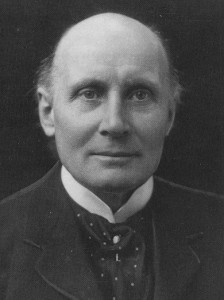Now,
all of this may begin to seem intuitive, but once we have a formula set down it
also is open to attack and criticism, and the critics of Bayesianism see a flaw
in it that they consider fatal. The flaw they point to is usually called “the
problem of old evidence.”
One
of the ways a new hypothesis gets more respect among experts in the field the
hypothesis covers is by its ability to explain old evidence that no other
theories in the field have been able to explain. For example, physicists all
over the world felt that the probability that Einstein’s theory of relativity was
right took a huge jump upward when Einstein used the theory to account for the
changes in the orbit of the planet Mercury—changes that were familiar to
physicists, but that had long defied explanation by the old familiar Newtonian
model.

Representations of the solar system (credit: Wikimedia Commons)
The
constant, gradual shift in that planets’ orbit had baffled astronomers for decades
since they had first acquired the instruments that enabled them to detect that
shift. This shift could not be explained by any pre-relativity models. But relativity
theory could describe this gradual shift and make predictions about it that
were extremely accurate. Examples of hypotheses that worked to explain old
anomalous evidence in other branches of science can easily be listed. Kuhn, in
his book, gives many of them.1
What
is wrong with Bayesianism, then, according to its critics, is that it cannot
explain why we give more credence to a theory when we realize it can be used to
explain pieces of old, anomalous evidence that had long defied explanation by
the established theories in the field. When the formula given above is applied
to this situation, critics say Pr(E/B) has to be considered equal to 100 percent, or absolute certainty,
since the old evidence (E) has been accepted as having been accurately
observed for a long time.
For
the same reasons, Pr(E/H&B) has to be thought of as equal to 100
percent because the evidence has been reliably observed and recorded many times
– since long before we ever had this new theory to consider.
When
these two 100% quantities are put into the equation, according to the critics,
it looks like this:
Pr(H/E&B)
= Pr(H/B)
This
new version of the formula emerges because Pr(E/B) and Pr(E/H&B) are now both equal to 100 percent, or a
probability of 1.0, and thus they can be cancelled out of the equation. But that
means that when I realize this new theory that I’m considering adding to my
mental programming can be used to explain some old, nagging problems in my
field, my overall confidence in the new theory is not raised at all. Or to put
the matter another way, after seeing the new theory explain some troubling old
evidence, I trust the theory not one jot more than I did before I realized it
might explain that old evidence.
This
is simply not what happens in real life. When we suddenly realize that a new
theory or model can be used to solve some old problems that were previously not
solvable, we are impressed and definitely more inclined to believe that this
new theory or model of reality is a true one.







.jpg)
